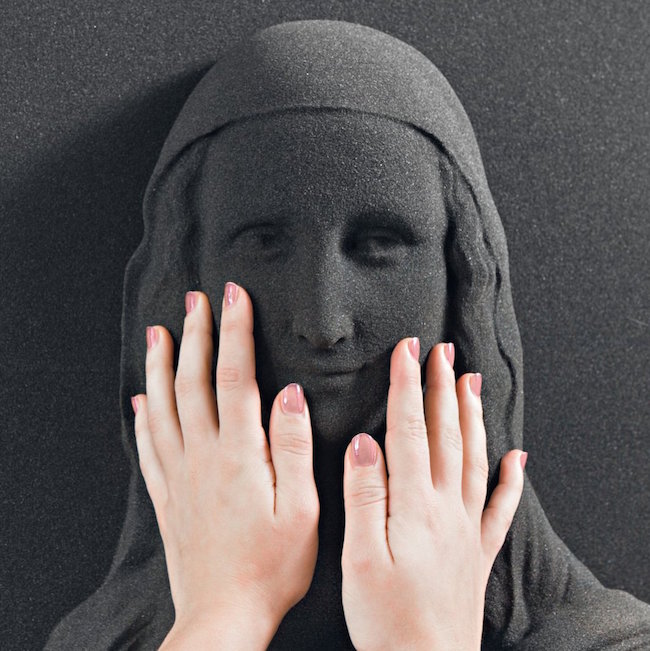Technology can allow some people to experience art and media they wouldn’t be able to experience otherwise. Last year Dutch composer Kyteman made a song in limited frequencies that can be heard by people with cochlear implants. Some video game designers have turned to binaural audio recording to make immersive games that can be played by the blind.
Now 3D printing has brought that practice into the world of painting. Marc Dillon, a Helsinki designer, created Unseen Art, a project which prints classical paintings that can be experienced through touch. You’d be tackled by a few dozen docents if you ever attempted to touch the Mona Lisa, but you’re encouraged to do just that with Unseen Art’s rendition of her. He told Bored Panda:
“Imagine not knowing what Mona Lisa’s smile looks like, or Van Gogh’s sunflowers. Imagine you heard people talking about them and knew they existed, but could never experience them for yourself. For the millions of people who are blind, that’s a reality,” the project explains in a video. They use 3D imaging and sand-based 3D printing to recreate these works of art on a scale and quality that can be put on display in museums.

Dillon had an idea to create a web site where users could upload 3D renderings of classic art that people could print in their homes. The fundraising campaign for the web site didn’t hit its goal, but hopefully it will resurface in some other form. Surely if 3D printing becomes more accessible then online communities will spring up around the same idea.
The Museo del Prado had a similar exhibition earlier this year, Touching the Prado (Madrid, January 20 – June 28, 2015). The exhibition was done with the help of Estudios Durero and their Didú project. The studio states that their team is made up of graphic artists, designers, retouchers, technicians and blind people. Their process includes much interpretation and image analysis to get the textures and curves just right before the work is presented.
Each image we work with Didú, requires its own route. The study of the work and its artistic context tells us about the essential elements to communicate and represents the first step in a process in which everything will be conditioned by the need to obtain a true reproduction of the reality and also comprehensible for the blind person.
Love (not quite) contemporary ceramic art + design? Let us know in the comments.

Unseen Art’s rendition of the Mona Lisa.

Estudios Durero’s rendition of the Mona Lisa.


Add your valued opinion to this post.